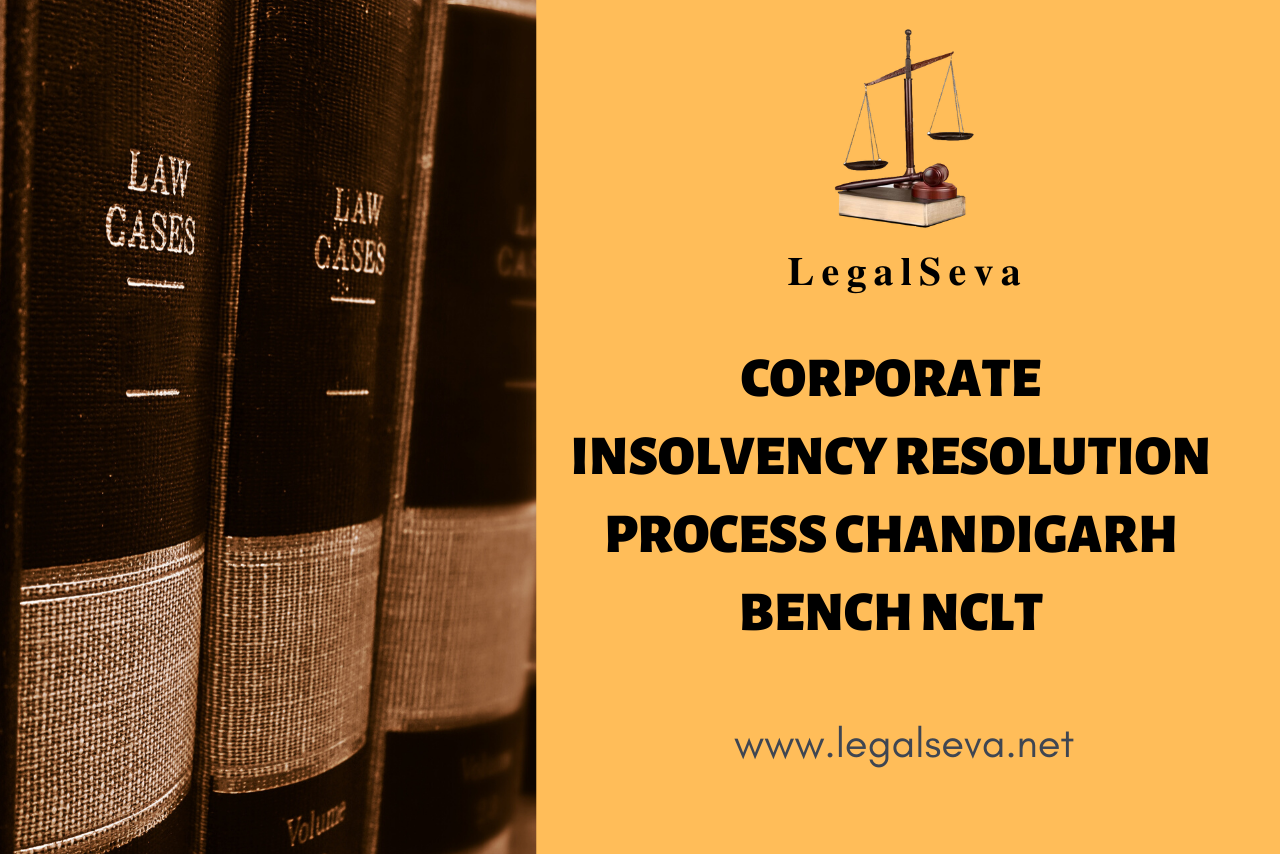Last Updated on April 8, 2020 by Legalseva.net
The Insolvency and Bankruptcy Code, 2016 is important statute dealing with bankruptcy resolution and liquidation which received the president’s assent on 28th May 2016. The Code is consolidated legislation providing for the insolvency resolution process of individuals, partnership firms, Limited liability partnerships, etc.
Also Read- A Must Know About Insolvency and Bankruptcy Code, 2016
Corporate Insolvency Resolution Process
The Corporate Insolvency Resolution Process, under which the management of a sick firm is taken from the debtor and handed over to a resolution professional who manages the firm as a going concern until resolution plan is initiated which would take the firm out of bankruptcy, is envisaged in IBC.
The scheme of the code is such that when a default as defined under Section 3(12) occurs, the CIRP begins. An application for the commencement can be made when the corporate debtor defaults and the default is of one lakh rupees or more (as given in s.4(1)). Section 6 of the code lays down who can initiate the CIRP. It enumerates that CIRP can be initiated either by a financial creditor, operational creditor or the corporate debtor himself.
Also Read- Hombuyers and Insolvency
Under Section 7, a financial creditor by himself or jointly with other creditors can apply for the corporate insolvency resolution process (CIRP) against any corporate debtor before the adjudicating authority who has defaulted on its payments. It is not necessary that the financial creditor applying for CIRP must be the one to whom the debtor has defaulted, but the default can be to any other financial creditor of the corporate debtor.Operational creditors can file for the CIRP under S.8. the process of triggering CIRP for operational creditors is different, who on the occurrence of default must first deliver a demand notice of the unpaid debt to the operational debtor as provided under s.8(1). Thereafter, the corporate debtor can, within 10 days of receipt of the notice dispute or challenge the CIRP application by bringing into notice a dispute or arbitration proceedings between him and the operational creditor. If there exists any such dispute or pending suit or arbitration proceedings, then the application is dismissed. The application is made to the adjudicating authority which can accept or reject the proposal after ascertaining whether the claim of default made is correct under s.7(5). Under the same sub-section, the adjudicating authority would reject the proposal and give seven days to the applicant to rectify the defect in his application.
On the other hand, when a corporate debtor has committed a default, the corporate applicant thereof may also file an application under s.10(1) for initiating CIRP with the adjudicating authority. The CIRP commences from the date of admission of the applicant under s.7(5)-s.7(6) of the code.
Also Read- Benefits of Insolvency Law for Corporate
The time limit for completion of the CIRP is given under s.12 and it states that the CIRP shall be completed within a period of 180 days from the date of admission of the application to initiate such a process. The resolution professional can, if instructed to do so by a resolution passed by the committee of creditors by a majority of 66% of the shareholders, file an application to the adjudicating authority to extend the period of CIRP. Once convinced that the CIRP cannot be completed within 180 days, the adjudicating authority can only once approve the extending of the CIRP by such further period it thinks fit, but no more than 90 days. This is done keeping in mind that the time frame for the resolution process is very important. As soon as the application is admitted, s.13 lays down that the adjudicating authority shall announce a moratorium for the purposes explained in s.14, make a public announcement for the initiation of the CIRP along with a call for the submission of claims and appoint a resolution professional in the manner as laid down under s.26.
Also Read- Send Demand Notice Before Insolvency Case
After the CIRP has begun, the debtor is relieved from the control of the sick firm and an interim resolution professional under s.16(1) is appointed within 14 days from the insolvency commencement date, who is given control of the corporate debtor and is tasked with management of the affairs of the corporate debtor under the directions of the committee of creditors. The interim resolution professional exercises the powers of the board of directors or the partners of the corporate debtor, whose powers are suspended. The important duties of the CIRP as spelled out in s.18(1), inter alia include constituting a committee of creditors and receiving and collating all claims submitted by creditors to him. The claims submitted by operational creditors, financial creditors, workmen and employees, and other creditors can be submitted to the interim resolution professional who is to verify all the claims within 7 days of the receipt of claims and maintain a list of creditors along with the amount claimed by them, the amount of their claims admitted and the security interest of such claims. The interim resolution professional is also tasked with protecting and preserving the value of the corporate debtor and managing the firm as a going concern under s.20(1). As soon as a CIRP is appointed, the insolvency professional shall make a public announcement of the CIRP.
Also Read- Recover Your Salary Through Nclt Chandigarh
After all, claims are received and collated by the interim resolution professional and after determining the financial position of the corporate debtor, the interim resolution professional is supposed to constitute a committee of creditors comprising of all the financial creditors of the corporate debtor under s.21(1). The committee of creditors is given a wide range of powers over the operation of the corporate debtor in the resolution period. The committee may in the first meeting held after 7 days of its constitution, voting by a majority of 66% either resolve to replace the interim resolution professional with another resolution professional or appoint the interim resolution professional as the resolution professional (s.22(2)). The resolution professional is hereafter supposed to conduct the CIRP and manage the operations of the corporate debtor during the CIRP. The resolution professional under s.29(1) is tasked with preparing the information memorandum which should contain all important details as specified in the Regulation 36(2) of the IBBI (Insolvency Resolution Process for Corporate Persons) Regulations, 2016.
Also Read- Move to Nclt Chandigarh for Insolvency
Submission of Resolution Plan
The next important phase of the CIRP is the submission of a resolution plan. Any individual who may be interested in putting the corporate debtor back on its feet may submit a resolution plan under s.30, based on the information memorandum prepared by the interim resolution professional. The eligibility of resolution applicants is laid down in s.29A and while submitting a resolution plan, the resolution applicant is supposed to submit an affidavit stating that he is eligible under s.29A to submit a resolution plan. S 30(2) specifies a time limit within which a resolution plan may be submitted. After the submission of a resolution plan, the resolution professional, as stated in Arcelor Mittal India Pvt Ltd v Satish Kumar Gupta, is not required to take any decision, but is only required to ensure that the resolution plans submitted conform to the requirements of s.30(2) and are complete in all respect before they are submitted to the committee of creditors.
Also Read- Nclt for Homebuyers
Once the plan is approved by the committee of creditors, the resolution plan is to be submitted to the adjudicating authority under s.31 of the code. If the adjudicating authority is satisfied that the resolution plan as approved by the committee of creditors meets all the requirements in s.30(2), it shall by order approve the resolution plan which shall then be binding on the corporate debtor and its employees, members, creditors, guarantors and other stakeholders involved in the resolution plan. When the adjudicating authority concludes that the resolution plan does not conform to the requirements of s.30(2), it may be an order to reject the plan. Once the resolution plan is rejected, the adjudicating authority orders the liquidation of the corporate debtor.
Also Read- NCLT Chandigarh Panchkula Mohali Legal Advice by Lawyer Advocate
For case specific advice one must contact Top/Best/Expert NCLT Chandigarh Lawyer Advocate in Chandigarh Panchkula Mohali Punjab Haryana.
This post is written by Kaustubh Kulkarni .
More on 99888-17966.
Disclaimer – The opinion expressed is of the Author and do not resembles the views of website.


1 thought on “Corporate INSOLVENCY Resolution PROCESS Chandigarh Bench NCLT”
Comments are closed.